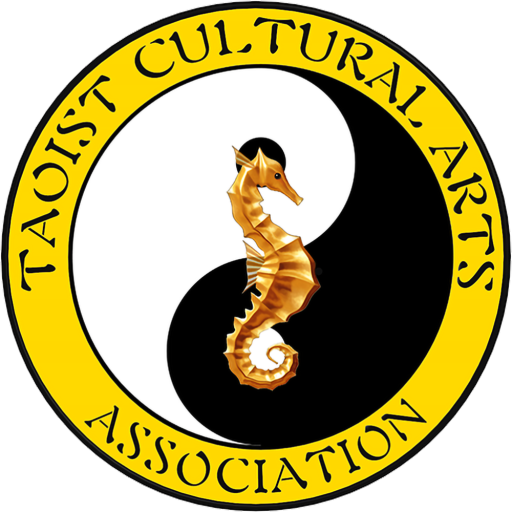Tai Chi weapons training is a multifaceted discipline that intertwines the traditional elements of Tai Chi with the practical aspects of martial arts. The exploration of different weapons in Tai Chi not only enhances physical skills but also deepens the practitioner’s understanding of self-defense, balance, and internal harmony. This comprehensive guide, enriched by insights from a Tai Chi master with over forty years of experience, delves into the unique characteristics and benefits of each traditional Tai Chi weapon.
Philosophy and Evolution
Tai Chi, originally a martial art, incorporates weapons training as a crucial aspect. Historically, weapons were commonly available, and their use for self-defence was a practical necessity. Some even argue that Tai Chi weapons forms are older than the unarmed forms, evolving from a time when personal defence necessitated carrying a weapon. Modern Tai Chi weapon training, while less focused on actual combat, still retains these ancient martial roots and emphasizes self-defence principles.
Tai Chi Jian 剑
Origin and Characteristics
The Jian, known as a gentleman’s sword, is a straight, double-edged sword, often sporting a tassle made of brocade, and capable of cutting, thrusting, and defending. Its design is elegant, requiring a balance of strength and finesse from the practitioner. As well as both edges and the tip, the hilt and guard can also be used in partner exercises such as sticky swords.
Skills Developed
- Defensive Techniques: The Jian’s primary focus is defense. Practitioners learn ‘sticky swords’ – a method where the sword acts as a shield, emphasizing the importance of protecting oneself against an opponent’s blade.
- Self-Preservation: Training with the Jian awakens innate self-preservation instincts. The proximity to a weapon, even a wooden one, heightens awareness, stimulates the shen and qi, and develops a keen sense of danger.
- Balance and Whole Body Movement: The Jian’s length and weight improve balance and encourage the use of the entire body in movements, essential for accurate and effective techniques.
Tai Chi Dao 刀
Origin and Characteristics
The Dao, literally meaning ‘knife’, akin to a saber or cutlass, is a heavy, single-edged broadsword, historically seen as a commoner’s weapon. Its design is robust and straightforward, favoring slashing movements.
Skills Developed
- Strength and balance: The weight of the Dao develops physical strength and balance, essential for its dynamic movements.
- Versatility in Attack: Although primarily used for slashing, its pointed blade also allows for stabbing techniques, adding versatility to its use.
- Full Body Engagement: Handling the Dao requires engaging the whole body, particularly the stance and torso, to manage its weight and movement effectively.
Tai Chi Stick 杆
Origin and Characteristics
The stick or staff is probably the oldest weapon known to man and was commonly carried by travellers as an aid to walking as well as a handy weapon of self-defence. The Tai Chi stick varies in length and can be either shoulder height or as tall as the practitioner plus the width of their hand. It is typically held in both hands.
Skills Developed
- Leverage and Locks: The stick’s length and dual-hand usage make it an effective tool for learning leverage, particularly in locks and holds.
- Alternation Techniques: Training with the stick enhances understanding of left and right alternation techniques, crucial for balanced skill development.
Tai Chi Fan 扇子
Origin and Characteristics
The Tai Chi fan, often seen as a courtesan’s weapon, is a more recent addition to Tai Chi weaponry. It can include metal blades and is used for both distraction and attack.
Skills Developed
- Distraction and Deception: The fan’s fluttering sound and bright colors aid in training concentration and avoiding distractions. Its appearance can be deceptive, masking its effectiveness as a weapon.
- Dexterity and Artistry: The fan requires and develops a high degree of hand-eye coordination and allows for artistic expression in its movements.
- Symbolism: The fan is primarily used for cooling, but also was held across the face for concealment. The cooling effect of the fan was due to the movement of air so it also implies the natural force of the wind, invisible and yet dynamic as for example in a storm or typhoon, (literally 台风 Taifeng or big wind.) In battle, fans were used for signaling similar to flags or standards.
Tai Chi Silk 丝
Origin and Characteristics
Tai Chi silk, originating from practices like the Shandong Yangge dance, is a flexible and easily concealable weapon. It can be used for entwining, trapping, and repelling an attacker.
Skills Developed
- Flexibility and Deception: Silk training enhances flexibility in movement and can be deceptive in its appearance, often seen as a non-threatening item.
- Adaptability in Self-Defense: The ability to use an everyday item like a scarf or jumper as a defensive tool highlights the adaptability and resourcefulness in Tai Chi weapon training. A silk is a flexible weapon so it can be used for trapping or literally strangling an attacker.
Benefits of Tai Chi Weapons Training
Flowing Movement and Inertia
The additional weight of Tai Chi weapons adds an element of inertia to movements, enhancing the flow and continuity essential in Tai Chi practice.
Balance and Posture
Weapons training improves balance and posture, vital for both martial arts and general health. The length and weight of the weapons require practitioners to maintain proper posture and balance, integrating the whole body in every movement.
Awakening Dormant Skills
Handling weapons, especially those with historical significance, can awaken dormant skills and instincts related to self-defense and survival, deeply ingrained in our physical and mental makeup.
The Cultural Significance of Tai Chi Weapons
The practice of weapons in Tai Chi is deeply rooted in China’s martial history. Each weapon, from the Jian (sword) to the Dao (broadsword), is not just a tool for self-defense; they are symbols of virtue, wisdom, and the balance between strength and gentleness. Historically, these weapons were essential for survival, but in modern Tai Chi practice, they represent a connection to ancestral wisdom and martial traditions.
- Historical Legacy: Each weapon carries with it stories and philosophies from ancient China, offering a glimpse into the past and preserving traditional martial arts.
- Social Harmony: In practicing these weapons, there is an underlying theme of harmony and balance, crucial principles in Chinese society. It’s about mastering the self rather than overpowering others, reflecting a societal value of mutual respect and peace.
The Spring Festival: A Cornerstone of Chinese Culture
The Spring Festival, or Chinese New Year, is arguably the most significant of all traditional Chinese festivals. It’s a time of celebration, family reunion, and cultural rituals. Spring festivals in Shandong involved Juggling, Lion dance, Dragon boats, stilt walking, Yangge dancing, theatre, and sword and stick demonstrations as well as stalls and religious observances to honour the Gods like burning incense and visiting temples.
- Cultural Identity: The Spring Festival is a powerful symbol of Chinese cultural identity, showcasing traditional customs, foods, and activities like dragon and lion dances, and fireworks.
- Social Renewal: This festival marks the start of a new year and is seen as a time for renewal, both personally and socially. It’s a time to settle debts, reconcile with others, and start anew.
Yangge Dance and its Social Impact
Yangge dance, a traditional folk dance, plays a significant role in rural communities and urban celebrations in China. It is more than just a dance; it’s a celebration of life, community bonding, and cultural identity.
- Community Cohesion: Yangge dance often involves groups of people and serves as a social activity that strengthens community ties and fosters a sense of belonging.
- Cultural Preservation: As a folk dance, Yangge is a vehicle for preserving and transmitting cultural values and stories, keeping the rich tapestry of Chinese folklore alive.
The Art of Juggling and its Cultural Dimensions
Juggling in China, often seen in festivals and public gatherings, is not just a display of skill but also a form of storytelling and entertainment that has been passed down through generations.
- Artistic Expression: Juggling in China often incorporates elements of drama, humor, and narrative, making it a unique form of artistic expression.
- Cultural Exchange: As jugglers travel and perform, they become agents of cultural exchange, spreading and sharing regional styles and techniques across different areas.
Conclusion
These traditional practices – Tai Chi weapons, Yangge dance, juggling, and the Spring Festival – are not mere relics of the past. They are living, breathing aspects of Chinese culture that continue to have a significant impact on social structures, community bonding, and cultural identity. They represent a rich heritage that is both preserved and evolved through each generation, reflecting the dynamic and vibrant nature of Chinese culture. Each practice, in its unique way, contributes to the tapestry of Chinese society, enhancing its cultural depth and social cohesion.

